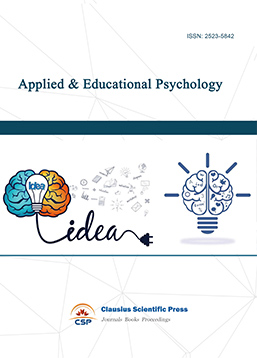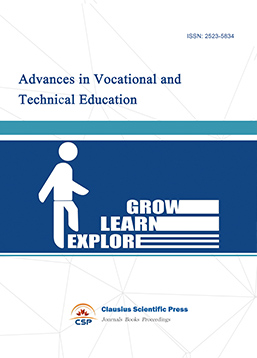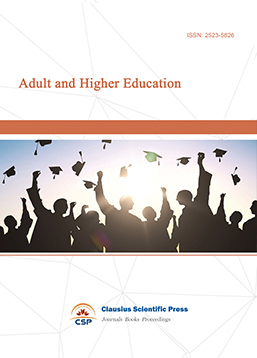Research on Personalized Teaching Recommendation Model Integrating Attention Mechanism and Cluster Analysis
DOI: 10.23977/aetp.2025.090605 | Downloads: 11 | Views: 331
Author(s)
Xinyi Chen 1
Affiliation(s)
1 School Mathematical Sciences and Applications, Nanjing Normal University Taizhou College, Taizhou, Jiangsu, China
Corresponding Author
Xinyi ChenABSTRACT
To improve the accuracy and interpretability of personalized teaching recommendations in primary and secondary school settings, this paper proposes a teaching recommendation model that integrates behavioral modeling and cluster analysis. This model first uses a bidirectional long short-term memory (Bi-LSTM) network to model students' learning behavior sequences to capture the dynamic changes in their learning process. It then introduces an attention mechanism to focus on key behavioral segments and generate recognizable individual feature representations. Finally, K-Means clustering is used to construct student learning profiles, enabling hierarchical resource recommendations. Experimental results demonstrate that this model outperforms comparative methods across multiple evaluation metrics (Precision, Recall, and NDCG), demonstrating superior recommendation performance and clustering quality. This research provides effective insights for implementing lightweight and scalable intelligent teaching recommendation systems and lays the foundation for the implementation of AI applications in education.
KEYWORDS
Personalized Teaching; Recommendation System; Bi-LSTM; Attention Mechanism; K-Means Clustering; Learning Behavior ModelingCITE THIS PAPER
Xinyi Chen, Research on Personalized Teaching Recommendation Model Integrating Attention Mechanism and Cluster Analysis. Advances in Educational Technology and Psychology (2025) Vol. 9: 27-36. DOI: http://dx.doi.org/10.23977/aetp.2025.090605.
REFERENCES
[1] S. Ruan and K. Lu, "Adaptive deep reinforcement learning for personalized learning pathways: a multimodal data-driven approach with real-time feedback optimization," Comput. Educ.: Artif. Intell., vol. 9, p. 100463, Dec. 2025, doi: 10.1016/j.caeai.2025.100463.
[2] X. Luo, S. Wang, and K. F. Hew, "Development and implementation of a generative AI-based personalized recommender system to improve students' self-regulated learning and academic performance," Comput. Educ., vol. 241, p. 105486, Feb. 2026, doi: 10.1016/j.compedu.2025.105486.
[3] O. C. Santos, J. G. Boticario, and D. Pérez-Marín, “Extending web-based educational systems with personalised support through user centred designed recommendations along the e-learning life cycle," Softw. Dev. Concerns E-learn. Domain, vol. 88, pp. 92–109, Aug. 2014, doi: 10.1016/j.scico.2013.12.004.
[4] X. Zhou, Q. Zhi, Z. Liu, D. Han, and N. Liu, "FedPDA: personalized federated learning based on attribute similarity migration," Inf. Sci., vol. 720, p. 122553, Dec. 2025, doi: 10.1016/j.ins.2025.122553.
[5] Y. Jdidou, S. Aammou, H. Er-radi, and I. Aarab, "Gradient-enhanced evolutionary multi-objective optimization (GEEMOO): balancing relevance, learning outcomes, and diversity in educational recommendation systems," Intell. Syst. Appl., vol. 27, p. 200568, Sep. 2025, doi: 10.1016/j.iswa.2025.200568.
[6] M. Baidada, K. Mansouri, and F. Poirier, "Hybrid filtering recommendation system in an educational context:," Int. J. Web-based Learn. Teach. Technol., vol. 17, no. 1, Jan. 2022, doi: 10.4018/IJWLTT.294573.
[7] Y. Fu, S. Yin, L. Ma, and J. Liu, "Learning from history for personalized federated learning," Neural Networks, vol. 193, p. 108071, Jan. 2026, doi: 10.1016/j.neunet.2025.108071.
[8] Z. Ding and W. Xue, "Navigating anxiety in digital learning: how AI-driven personalization and emotion recognition shape EFL students' engagement," Acta Psychol. (Amst.), vol. 260, p. 105466, Oct. 2025, doi: 10.1016/j. actpsy. 2025. 105466.
[9] W. Liu, J. Chen, B. Wang, Z. Tian, and W. She, "Per-FedAHM: adaptive historical memory-driven personalized federated learning," Neurocomputing, vol. 658, p. 131716, Dec. 2025, doi: 10.1016/j.neucom.2025.131716.
[10] M. Wu, J. Li, J. Xu, B. Chen, and K. Zhu, "Personalized federated learning for semantic communication with collaborative fine-tuning," Digital Commun. Networks, Aug. 2025, doi: 10.1016/j.dcan.2025.08.005.
[11] H. Sun, Z. Liu, D. Chu, Q. Z. Sheng, Z. Liu, and J. Yu, "Personalized multimodal sentiment analysis under uncertain modalities missing via pretraining and online learning," Knowledge-Based Syst., vol. 329, p. 114287, Nov. 2025, doi: 10. 1016/j.knosys.2025.114287.
[12] E. Bauer, “Personalizing simulation-based learning in higher education," Learn. Individ. Differ., vol. 122, p. 102746, Aug. 2025, doi: 10.1016/j.lindif.2025.102746.
[13] I. Kotsyuba, A. Shikov, K. Karpik, M. Galperin, A. Kudriashov, and J. Silko, "Recommendation web service for choosing an individual educational path in the field of transportation systems' programming," X Int. Sci. Sib. Transp. Forum — Transsiberia 2022, vol. 63, pp. 591–599, Jan. 2022, doi: 10.1016/j.trpro.2022.06.052.
[14] J. L. Plass and F. Froehlich, "The future of personalized learning with AI," Learn. Individ. Differ., vol. 124, p. 102813, Dec. 2025, doi: 10.1016/j.lindif.2025.102813.
[15] H. Zhu, Y. Fan, and Z. Xie, "UA-PDFL: a personalized approach for decentralized federated learning," Neurocomputing, vol. 657, p. 131579, Dec. 2025, doi: 10.1016/j.neucom.2025.131579.
| Downloads: | 47943 |
|---|---|
| Visits: | 2062268 |

 Download as PDF
Download as PDF



